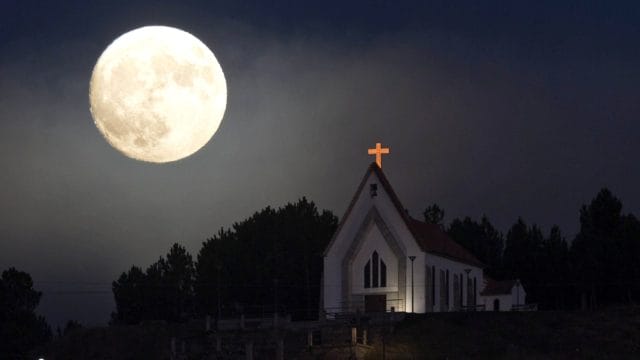You can expect to see the typical fireworks displays on New Year’s Eve. However, this year revelers are also treated to another kind of night sky spectacle on the first day of 2018 with a Supermoon.
A “supermoon” will grow only after sunset on Monday. The next in a “trilogy” of large moons in December and January. It’ll appear up to 14 percent larger and 30 percent more economical than a normal full moon. Since it reaches the closest point to Earth in its elliptical orbit around our planet.
The New Year’s Day moon is going to be the nearest to Earth of the three supermoons. And will probably be the biggest and brightest moon of 2018. The first arrived on Dec. 3, and another will look on Jan. 31.
Monday’s celestial screen will be impressive right around moonrise, at 5:04 p.m. Since the moon makes its way over the eastern horizon. Looming over the Earth, it will appear larger when viewed against trees, the skyline or other objects on the floor than it does in the open skies.

“If you find the moon rising above the horizon, it can be kind of striking,” stated Conrad Jung, staff astronomer at the Chabot Space and Science Center in Oakland. “It is the sky’s manner of saying ‘Happy New Year.'”
Waiting to consider the moon in the sky by itself could be underwhelming. However, because it can be challenging for the eye to tell the difference between a supermoon and a regular full moon without visual context.
“Whenever you put the term ‘super’ in front of something, it is very good for publicity,” said astronomer Andrew Fraknoi, chairman emeritus of Foothill College’s astronomy department. “But it’s not a laser show or a George Lucas film”
Weather forecasters are predicting partially cloudy skies Monday night in the Bay Area. So you could find it challenging to catch a glimpse of the moon.
Should you miss it, you’ll have another opportunity to spot a supermoon on Jan. 31. Near dawn, roughly 5:30 a.m. in the Bay Area, there’ll also be a total lunar eclipse as the Earth blocks out light from the sun to the moon — giving our astronomical neighbor an eerie glow and, possibly, a red tint.
Having two full moons in 1 month makes the next one a blue moon — so the Jan. 31 lunar spectacle will be a “super blue blood” moon.
“This one will be cute, but the next one will be really sexy,” Fraknoi said.
During the eclipse, the reds at the end of the color spectrum will hit the moon. Turning it “kind of a blood orange shade,”. Explained Richard Ozer, 56, president of the Eastbay Astronomical Society, that plans to get up early to picture the event if the weather cooperates.
“It’s quite stunning,” he explained.



